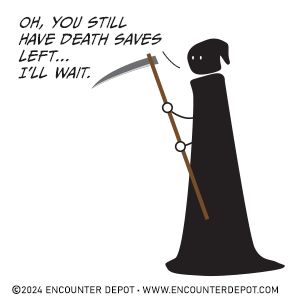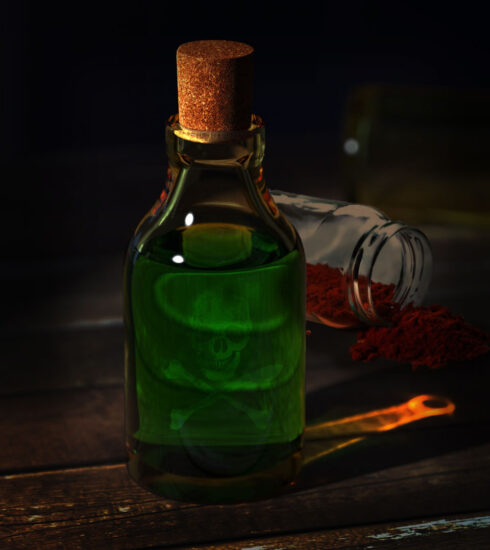Die Player Die
How to die and get better in DnD
Most Dungeons and Dragons games contain combat. The system is pretty much set up this way, with a large percentage of what’s in the books combat oriented. So, that also means that unless the GM is fudging the dice like crazy, at some point your players will take so much damage they go below 0 hit points. So this is an article about how to die and get better in DnD 🙂
This is where the death saves come in. Every time your turn comes around, you roll a death save to try to stay alive, and with a 50/50-ish chance, your character might end up failing 3 death saves before someone can come by and heal them back up.
What happens then depends on the GM, but below are my suggestions for some slight rule changes.

Dying and coming back
So, your friends didn’t save you in time, did they? Well, you’re dead! So what happens now? When you die, the soul leaves the body (this will become important later), to go to a better.. or worse place. Amongst other things depending on your deity.
Level 1-4
At low levels, this really sucks, because the lowest level spell that can help is Revivify, which is a 3rd level spell, thus your caster must be at least 5th level to get it. AND it needs to be cast within 1 minute of the person dying. So, for a group below level 5 – the only thing to do is to either say goodbye, or drag the corpse along to the nearest town, hoping to find a high level cleric. Although, that will take more than a minute, so the spell needed will be higher, and the cost goes up.
With a generous GM, the cost might not be a problem, of course, less generous you might owe the church/temple etc. a favor or something like that.
Level 5 and up
Now your cleric can pack a bigger punch, and will probably have taken revivify, having the power to pull a person back from death with the cost of a spell slot and 300 gp in gems, any character can be brought back. And as the party’s level increases, the amount of time passing before needing to bring a person back expands. So with Raise Dead, the cleric doesn’t even need to have the spell prepared, but can cast it within 10 days to bring the dead character back again.
The problem
So, one would think, that would be cool – we as characters have earned the right to “save game” and pull a character back from death, cause we’ve worked hard, slain monsters and gathered treasure. Now we’re high, or at least 5th level, characters and death no longer is that dangerous.
And right there it is… if death is no longer dangerous, other than TPK (Total Party Kill), the party can come back for just about anything. Even with the cleric going down first, the last player can drag the others home to a city and get them back.
So, what’s wrong with that? Well, part of the excitement of combat is the risk of dying from it. The chance it goes awry… if that doesn’t exist, I can just walk forward slashing my sword until I or the monsters die. Cause I’ll come back. And with no danger, no risk… there’s no genuine excitement. It just becomes a math problem.
Getting better
First up – kudos and credit goes to Matt Mercer from Critical Role for pretty much this setup. I haven’t read any rules from him concerning this, but I’ve watched the CR games and thought these were great ideas. So I made a system, which I believe is pretty much like his 🙂
The fixing of the not-dying problem (un-dead? hehe) is two-fold. First up, the spells are a bit too powerful – so we’ll take those down a notch.
Revivify – leave as is, 1 minute after being killed
Raise Dead – Works only 1 day after being killed, not 10
Reincarnate – Works only 1 day after being killed, not 10
Resurrection – Works only 1 month after being killed, not 100 years
True Resurrection – Works 1 year after being killed, not 200 years
Part two of the equation is about the soul having left the body (Told you it would be important). If you cast Revivify, the soul remains slightly tethered to the body, allowing it to be pulled back easily.
However, if the person is dead over 1 minute, the soul has left, and you’ll need to get it back to the body, for the body to live again.
To do that, you need to roll a DC 10 on a d20 – so 50/50 chance of success, with a few modifiers. Let’s call it a Soul-Roll.
The modifiers:
If you have died before, the DC goes up with every death by +1. So if you died 2 times before, the DC would be a 12 instead of a 10.
Your friends can try to aid you in coming back. They can make a roll for any skill that they can convince the GM would help. So, sing a song to celebrate life, threaten the gods, tell a fond memory… GM should reward creativity, and also set the DC for the attempt, DC 10 being the lowest though. So singing a song for the fallen comrade, DC 10, threatening a God.. a lot higher 😉
For every companion who succeeds, the DC for the Soul-Roll goes down by 2, to a max of -10 to the roll, no matter how many tries.
For every companion who fails, the DC for the Soul-Roll goes up by 1, to a max of +10.
If the dead player’s Soul-Roll is a success, their soul returns to the body, and the spell cast determines what state their body is in.
If the dead player’s Soul-Roll isn’t a success, their soul moves on, and the character remains dead. Time to roll up a new character.
Alternatives can final death can be: “True Resurrection” can bring back a soul that with a failed roll, and/or “Wish” can bring back a soul. This can start a quest for a caster who can help with those, or a quest for payment for those spells.
See also:
Unleash the unexpected – an article about casting unprepared spells
Follow Encounter Depot on facebook












